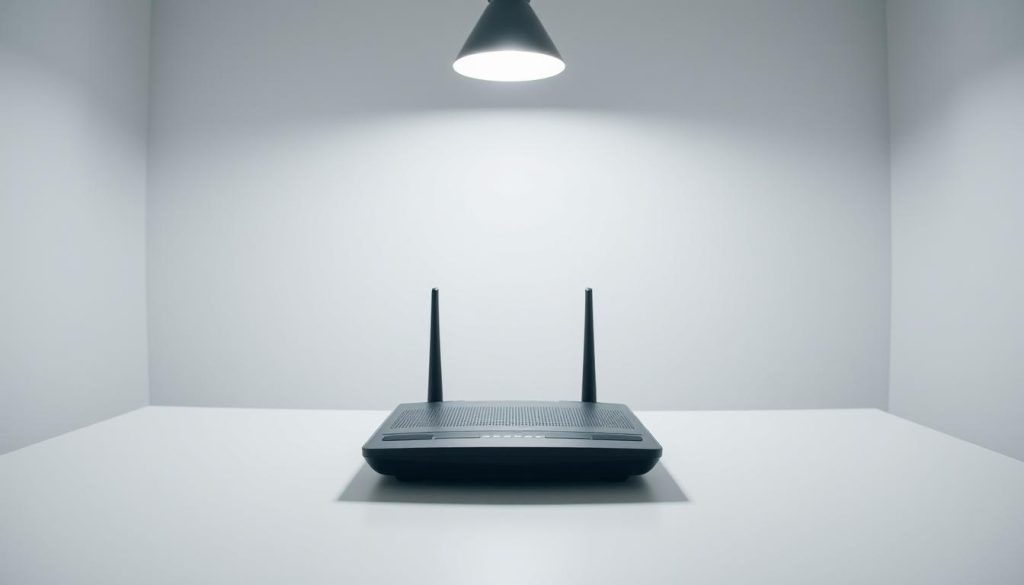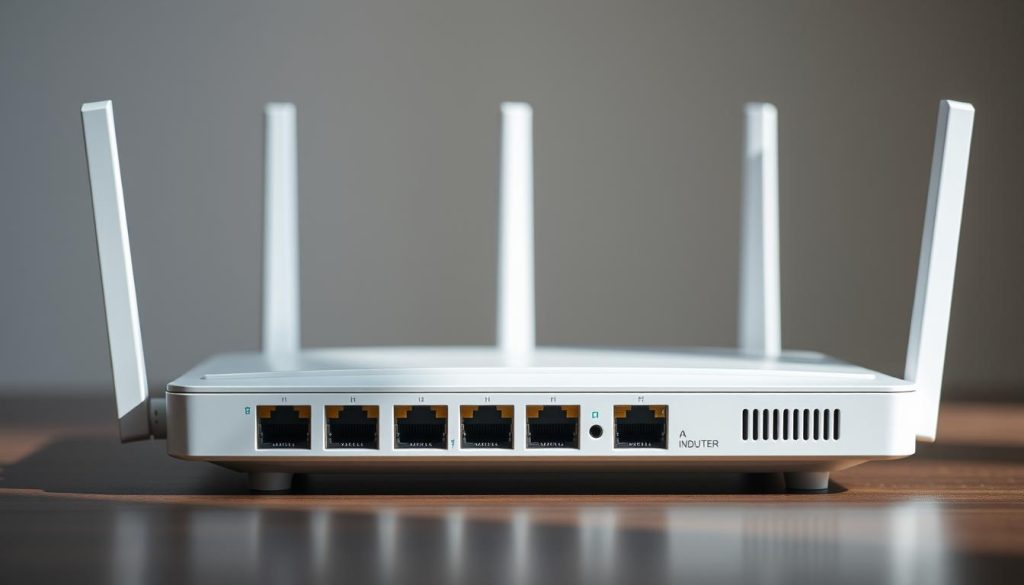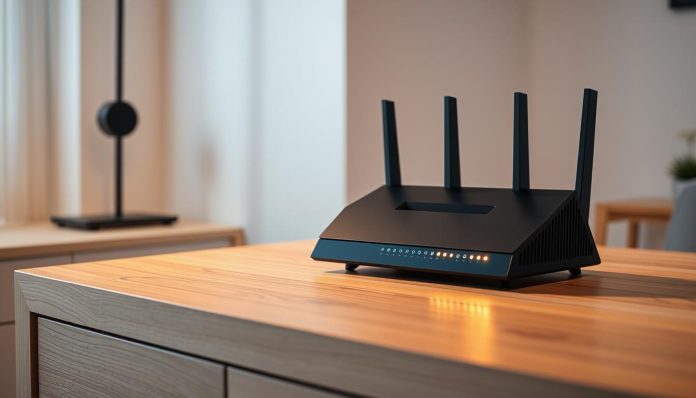Fast containment matters. A compromised gateway can let attackers reach devices, change DNS, push malware, and join equipment to botnets like Mirai, VPNFilter, CyclopsBlink, and DNSChanger.
You will get a clear, stepwise plan for swift containment, verification, cleanup, and lasting protection across the entire network. This short intro frames why takeovers matter now: the internet entry point can silently intercept traffic, exfiltrate credentials, and spread code without visible signs.
The guidance that follows is practical and safe for nontechnical readers. It shows how to spot signs such as strange DNS entries, odd firewall settings, unknown devices, and unexpected bandwidth spikes. You will also see how to order resets, firmware fixes, password changes, and device scans so reinfection is unlikely.
Key Takeaways
- Act fast: Contain the gateway and isolate devices immediately.
- Check DNS, firewall rules, and connected devices for anomalies.
- Update firmware, reset credentials, and scan systems for malware.
- Harden Wi‑Fi and disable risky features to reduce exposure.
- Follow a repeatable checklist for long‑term protection and monitoring.
Why Router Hacking Matters Now: Risks to Your Home Network
A single weak gateway can let attackers monitor traffic, steal accounts, and redirect visits without obvious signs.
Modern threats exploit simple mistakes. Many people never change default admin passwords or leave remote admin and UPnP enabled. That makes routers an easy entry point for hackers.
How attackers exploit typical weaknesses
Threat actors use default or weak credentials and brute force methods against WPS PINs. They also abuse remote management and exposed services to gain access.
- Once inside, attackers inspect traffic and harvest personal data and account credentials.
- DNS manipulation redirects browsers to malicious sites that steal information or install malware.
- Open ports and outdated firmware create long‑term persistence and lateral movement across devices.
Real campaigns and why home gear is targeted
Campaigns like VPNFilter, CyclopsBlink, DNSChanger, and Mirai show mass exploitation of consumer devices. Manufacturers face pressure from regulators, but your actions remain vital.
Bottom line: a compromised gateway can turn your internet into a launchpad for wider attacks. Small changes cut risk fast.
Immediate Red Flags: Signs Your Router May Be Hacked
Multiple devices showing the same strange behavior usually points at a gateway-level problem. Spotting several concurrent signs gives strong evidence the network entry point has been tampered with rather than a lone infected device.
Common indicators include browser hijacking and DNS redirects that send you to lookalike or malicious sites across different machines.

- Browsers redirecting to odd pages or frequent popups on trusted websites suggest DNS or content injection.
- Unknown entries in the connected devices list — unfamiliar names, MAC addresses, or IP addresses — point toward unauthorized devices on the network.
- Sudden admin login credential failures, disabled firewall rules, or unexpected port forwarding mean settings were changed without consent.
- Compare DNS addresses in the admin panel with ISP or chosen DNS provider addresses to detect unauthorized changes.
- Unexplained bandwidth spikes, ISP overage alerts, or slow internet during idle times may indicate botnet activity or cryptomining.
- Review router logs for odd access times, failed logins, or unknown IP addresses accessing the admin interface.
Document dates and times of anomalies and correlate signs across devices. Multiple indicators together are a strong sign you must proceed with containment and verification immediately.
Isolate First: What to Do the Moment You Suspect a Breach
Sever connectivity right away so attackers cannot continue remote activity or alter settings. Fast isolation stops ongoing manipulation and limits data loss.
Disconnect affected equipment immediately. Unplug the power on the router and remove cables from critical devices. If possible, pull the ethernet cable so you can inspect systems later using a safe, wired connection.

Disconnect power and critical devices
Unplugging halts remote access and cuts command channels. Keep computers, phones, and IoT gear offline until you have a plan for secure checks.
Document symptoms and timestamps
Record redirects, popups, unknown entries, and odd activity times before making changes. Exact timestamps help correlate router logs and system events during verification.
- Keep key machines offline to prevent data leakage.
- Prepare password manager and recovery tools for quick credential rotation after a safe reset.
- Stage reputable scanners so device cleanup follows the gateway fix.
| Action | Why it matters | Next step |
|---|---|---|
| Power off gateway | Stops active manipulation | Document symptoms, then plan reset |
| Disconnect critical device | Prevents further data loss | Scan offline with trusted tools |
| Note timestamps | Supports log correlation | Use exact system times for forensics |
Confirm the Compromise: Access Router and Check Critical Settings
Start by signing into the device control panel so you can inspect core configuration items. Use the router’s IP address in a browser and perform checks while the gateway is on a temporary, isolated connection.

Review DNS, port forwarding, and firewall
Look for unexpected DNS addresses, open ports, or disabled protection. Validate DNS server addresses against those from your ISP or preferred provider. Confirm the firewall is enabled and remove any suspicious port forwarding or remote management entries.
Check logs for unusual access
Open system logs and note abnormal login times, failed login attempts, and unknown IPs. Some ISPs limit log detail; where available, cross‑check ISP portal entries for matching events.
Compare firmware with manufacturer listings
Find the installed firmware version on the admin page and compare it with the latest on the manufacturer site. Outdated router firmware can contain exploitable vulnerabilities and is a valid reason for a full reset and update.
- Look for new admin users or changed roles that grant persistent access.
- Record any settings you will restore after remediation, such as SSID and preferred DNS addresses.
- If logs are missing or tampered with, treat altered core settings or old firmware as proof enough to proceed with remediation.
What to Do When Your Router Is Hacked: Incident Response at Home
Start cleanup by restoring factory defaults so malicious tweaks no longer control critical ports or DNS entries.

Use the physical reset button (press ~10–30 seconds) to wipe unauthorized changes. After the device reboots, connect with an ethernet cable before any configuration.
Update firmware immediately. Fetch the latest router firmware from the manufacturer site and apply it before restoring any saved settings. This closes known vulnerabilities and prevents quick reinfection.
Change all passwords and login credentials. Replace admin, Wi‑Fi, and ISP portal passwords. If DNS manipulation occurred, rotate key account passwords such as email and banking.
- Disable remote management and turn off UPnP until intentionally reenabled.
- Verify DNS entries match your chosen provider and re-enable the firewall.
- Recreate SSIDs and strong passphrases rather than reusing old exports that may be compromised.
| Action | Why it matters | Quick tip |
|---|---|---|
| Factory reset | Removes altered settings and transient malware | Hold reset 10–30 seconds; use wired access |
| Apply firmware update | Closes exploits attackers use for persistence | Download from vendor site, verify version |
| Rotate passwords | Stops credential reuse and reused access | Use a password manager and unique passphrases |
| Verify settings | Ensures DNS, firewall, and ports are clean | Document baseline and keep router isolated until endpoints are scanned |
Clean Connected Devices: Malware Removal and Recovery
Malicious code can survive a reset, so every connected device needs a careful cleanup.
Scan every device on the network with reputable anti‑malware tools. Run full, up‑to‑date scans on PCs, phones, tablets, smart TVs, and IoT gear. Quarantine or remove threats, reboot, then rescan to confirm removal.
Look for unfamiliar programs, browser extensions, and persistent services. Fake antivirus or sudden popups often signal infection. Check startup entries and services for items that maintain control.
Review browser settings and certificates for unauthorized changes. Update each device’s operating system and security software before reconnecting to the network. Avoid restoring unverified backups; prefer clean installs if contamination is likely.
- Verify email, cloud, and banking apps for altered recovery options.
- Keep less‑trusted gadgets on a separate guest network until fully cleaned.
| Action | Why it matters | How you verify |
|---|---|---|
| Full anti‑malware scan | Finds and removes persistent malware | Reboot, rescan clean result |
| Remove unknown software | Stops hidden control and persistence | No startup entries; normal app behavior |
| Update OS and security | Closes exploited vulnerabilities | Latest version shown in settings |
| Check browsers and certs | Prevents redirects and content injection | Default homepages and valid certs |
Harden Your Wi‑Fi: WPA3, Passwords, and Smart Segmentation
Prioritize wireless hardening: enable current encryption, set distinct SSIDs, and keep IoT and visitors on isolated segments.
Enable WPA3 where supported. If hardware lacks WPA3, choose WPA2 with AES and disable legacy TKIP. Turn off WPS and legacy protected setup options that make brute force attacks easier.
Use unique SSIDs and long passphrases for each network. Apply different passwords for main, guest, and IoT segments and rotate them periodically. Label networks clearly so guests join the correct signal without risking the main devices network.
Segment networks for safer devices
Create a separate guest SSID and an isolated IoT segment. That prevents less‑trusted gadgets from accessing sensitive information on primary machines. Test smart devices after segmentation so functionality stays intact.
- Choose family‑friendly DNS that filters malicious domains.
- Consider MAC filtering or scheduled reboots as added friction for attackers, noting potential usability tradeoffs.
- Document SSIDs, passphrase changes, and the segmentation layout for future reference.
| Setting | Benefit | Action |
|---|---|---|
| WPA3 / WPA2 (AES) | Strong encryption protects wireless traffic | Enable WPA3 or WPA2-AES; disable TKIP and WPS |
| Separate SSIDs | Limits cross‑device exposure | Create main, guest, and IoT networks with unique passwords |
| Filtered DNS | Blocks known malicious domains | Use family‑friendly DNS and document provider |
| MAC filtering & reboots | Adds defense layers | Enable selectively; schedule reboots if helpful |
Shut Down Common Attack Paths: WPS, UPnP, and Remote Access
Lock down common features that unintentionally create paths for lateral movement and remote access. These convenience options often trade ease for risk. Tightening them reduces exposure across the network.
Disable WPS (Wi‑Fi Protected Setup). The PIN method can be brute forced and gives attackers a fast way into wireless. Turn WPS off unless you have a verified, short‑term need.
Turn off UPnP by default. UPnP lets devices open ports automatically and can expose internal services on many routers. That increases lateral movement and useful surface for attacks.
- Block WAN‑originated requests and ensure admin interfaces are not reachable from the internet.
- Remove unnecessary port forwards and verify no external endpoints respond to scanners.
- If remote admin is required, use secure overlay tools rather than exposing HTTP(S), Telnet, or SSH publicly.
| Control | Benefit | Action |
|---|---|---|
| WPS off | Prevents PIN brute force | Disable in wireless settings |
| UPnP off | Stops automatic port opening | Turn off; add explicit rules if needed |
| Admin local only | Reduces internet exposure | Block WAN access; use secure VPN overlay |
After firmware updates, recheck these settings. Combine these changes with strong Wi‑Fi encryption and segmentation for better overall security and fewer vulnerabilities.
Ongoing Protection: Updates, Monitoring, and Optional VPN
Treat ongoing protection as a habit: schedule updates, scan lists, and verify settings before problems appear. Small, regular checks cut risk and catch changes fast.
Enable automatic firmware updates and routine restarts
Enable automatic firmware updates where supported. If automatic update is unavailable, set a monthly reminder to check the manufacturer site and update router firmware manually.
Schedule periodic reboots. A short restart can clear transient faults and some non‑persistent threats without disrupting the internet for long.
Audit connected devices and system logs regularly
Access the admin panel periodically and review the connected devices list. Remove unknown entries and change credentials if anything looks odd.
Check system logs for failed logins, off‑hour access, or configuration changes that you did not make.
- Use reputable security software on endpoints and use tools that scan for open ports and misconfigurations.
- Consider a VPN at the device or gateway level to encrypt sensitive traffic on untrusted networks.
- Keep DNS settings under review and back up clean configurations with dates noted.
| Action | Why it matters | How often |
|---|---|---|
| Enable auto update or manual check | Closes known vulnerabilities | Monthly or automatic |
| Periodic reboot | Clears transient issues | Weekly or biweekly |
| Audit devices and logs | Detects unauthorized access | Monthly and after alerts |
| VPN and endpoint software | Encrypts traffic and blocks malware | Continuous / as configured |
Conclusion
Close with a practical summary that shows how fast actions stop spread and restore stable network service.
,
Follow a clear playbook: isolate the gateway, confirm tampering, perform a secure reset, apply a firmware update, and restore control with strong credentials and hardened settings.
Remember key signs such as browser redirects, unfamiliar devices, disabled firewall entries, and odd admin logins. Act quickly when these appear.
Keep devices updated, segment wireless, disable WPS and UPnP, and audit DNS and logs regularly. Use reputable scanners and routine checks so data, addresses, and connected devices stay under your control.
Final tip: treat maintenance as routine. Regular updates and timely monitoring protect people and preserve internet service and information access.

